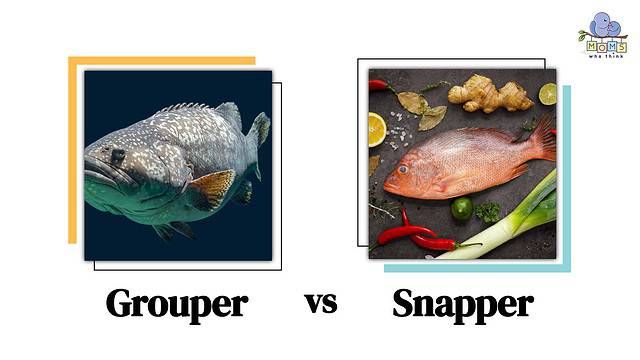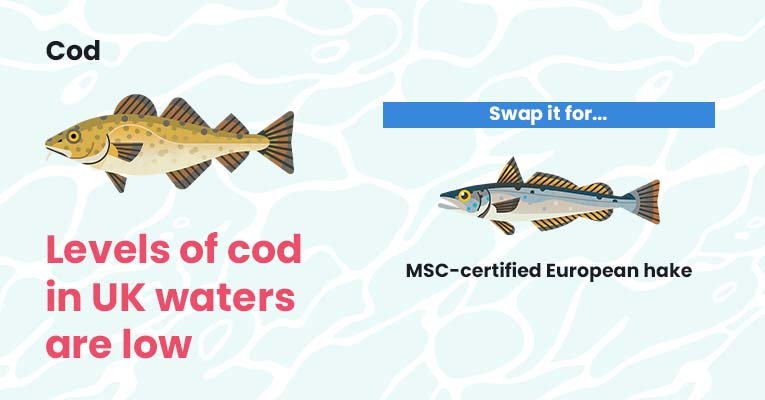When it comes to making seafood choices, salmon vs cod are two popular options with distinct differences worth exploring. Understanding the nuances between these two versatile fish can not only elevate your culinary skills but also enhance your nutritional intake. So, if you’re ready to dive into the world of seafood and make informed decisions about your meals, join us as we compare the flavors, cooking times, and nutritional benefits of salmon versus cod. Confidence in your seafood choices starts here, with a breakdown of the facts.
Nutritional Value Comparison

Salmon: The Protein and Omega-3 Powerhouse
Salmon is a champion of health-conscious eaters. It’s loaded with high-quality protein, vital for building and repairing muscles. But the real star is its abundance of omega-3 fatty acids. These fats promote heart health and brain function and even have anti-inflammatory properties. They might help reduce the risk of chronic diseases like heart disease and arthritis. On top of that, salmon is a good source of vitamins B6 and B12, potassium, and selenium. These nutrients keep your immune system strong, maintain healthy bones, and ensure optimal cell function.
Cod: The Lean and Mean Option
Cod is a great choice for those watching their weight. It’s a low-calorie and low-fat fish, making it a lighter alternative. Don’t be fooled by its leanness, though. Cod is still an excellent source of high-quality protein. It also boasts essential vitamins and minerals like vitamin B12, vitamin D, and selenium, all crucial for immune function, bone health, and optimal cell function. And yes, cod does contain omega-3 fatty acids, contributing to heart and brain health. Including cod in your diet can significantly improve your overall well-being.
Flavor and Texture: Salmon vs. Cod

Salmon and cod offer distinctly different experiences for your taste buds and your fork.
- Salmon: This fish boasts a rich, robust flavor with a touch of oiliness, often described as buttery. Its texture is incredibly tender and flaky, practically melting in your mouth. Salmon’s boldness makes for a decadent and satisfying meal.
- Cod: In contrast, cod has a much milder flavor, sometimes with a hint of sweetness. Some even compare it to chicken. This mildness makes cod incredibly versatile, allowing it to pair well with a variety of ingredients. Its texture is firm and meaty, similar to chicken again. Whether baked, grilled, or fried, cod offers a pleasant and subtly sweet taste that appeals to many.
Salmon: A Rich and Distinctive Flavor
Salmon’s unique flavor profile sets it apart. The slight oiliness contributes to its richness, making it a favorite for those who enjoy a more intense seafood experience. This buttery indulgence can be enjoyed smoked, grilled, or baked—any way you cook it, salmon’s taste is sure to please seafood lovers.
Cod: Milder and More Versatile
Compared to salmon’s bold flavor, cod offers a milder experience. The subtle sweetness even leads some to compare it to chicken. This mildness makes cod incredibly versatile. Because it doesn’t overpower other flavors, it can be paired with a wide variety of ingredients. The firm and meaty texture adds another layer of appeal. Cooked by baking, grilling, or frying, cod offers a pleasant and subtly sweet taste that caters to a wider range of palates.
Cooking Salmon and Cod: Delicious Methods for Every Taste
Both salmon and cod are versatile fish that can be prepared in a variety of ways to suit your preferences.
Salmon: Rich Flavor and Moist Texture
Salmon is prized for its rich flavor and moist texture. Popular cooking methods include:
- Grilling: This method imparts a smoky flavor and crispy skin to the salmon.
- Baking: Baking is a great option for a tender and juicy result.
- Pan-Searing: Searing on high heat creates a delicious, crispy crust while keeping the center moist and flaky.
- Raw Preparations: Salmon can also be enjoyed raw in sushi and sashimi, where its delicate taste is celebrated.
Cod: Mild Flavor and Flaky Texture
Cod’s mild flavor makes it a versatile choice. Here are some methods to highlight its delicate texture:
- Baking: Baking with seasonings and a squeeze of lemon enhances cod’s natural sweetness while keeping it moist.
- Pan-Searing: Pan-searing in a hot skillet creates a crispy crust on the outside and a tender interior.
- Steaming: Steaming is a healthy option that preserves moisture and creates a light dish.
These methods allow you to explore the different flavors and textures of salmon and cod, making them perfect for a variety of delicious and satisfying meals.
Sustainable Seafood Choices: Cod and Salmon

Making informed choices about seafood can help protect our oceans. Cod and salmon can both be part of a sustainable diet, but it’s important to choose them wisely.
Finding Sustainable Seafood
Look for eco-labels like the Marine Stewardship Council (MSC) for wild-caught fish and the Aquaculture Stewardship Council (ASC) for farmed fish. These labels indicate that the seafood comes from fisheries or farms that meet strict sustainability standards.
Environmental Impact of Unsustainable Fishing
Overfishing, regardless of the species, can harm fish populations and disrupt marine ecosystems. This can lead to:
- Depleted fish stocks: When too many fish are caught, populations struggle to recover.
- Bycatch: Unintended capture of non-targeted species in fishing gear harms other marine life.
- Habitat damage: Bottom trawling, a common fishing method, can damage the seafloor and the organisms living there.
Salmon Sustainability Concerns
- Farmed salmon: Escaped farmed salmon can compete with wild salmon for resources and introduce diseases.
- Chemicals: The use of antibiotics and pesticides in salmon farms can pollute surrounding waters.
Cod Sustainability Concerns
- Bycatch: Unsustainable cod fishing practices can lead to high levels of bycatch.
By choosing seafood with eco-labels and advocating for sustainable fishing practices, we can help ensure healthy oceans and thriving fish populations for the future.
Health Benefits of Salmon and Cod
Both salmon and cod are excellent choices for a healthy diet. They offer a variety of benefits thanks to their unique nutrient profiles.
- Salmon: A powerhouse of omega-3 fatty acids, known to reduce inflammation, improve heart health, and support brain function. It’s also rich in vitamin D for strong bones and a healthy immune system, and vitamin B12 for proper nerve function and red blood cell production.
- Cod: A lean protein source, ideal for building and repairing muscle tissue. It contains essential nutrients like vitamin B12 for nerve function, selenium for cell health, and phosphorus for strong bones. Additionally, cod is low in saturated fat and cholesterol, making it a heart-friendly option.
Including both salmon and cod in your diet can contribute to a range of health benefits and promote overall well-being.
Conclusion
Salmon stands out for its rich content of omega-3 fatty acids, essential for a healthy heart and brain. It’s also a good source of protein, vitamins, and minerals.
Cod offers a lean protein source, making it a healthy option. It’s low in saturated fat and packed with vitamins and minerals. Its mild flavor and firm texture make it perfect for various cooking methods.
The best choice between salmon and cod depends on your needs and preferences.
- Heart health and strong brain function: Choose salmon for its omega-3s.
- Lean protein and versatility: Cod is ideal for those seeking a healthy and adaptable fish option.
Ultimately, both salmon and cod offer unique flavors and nutritional benefits to elevate your meals.
References:
FAQ About Salmon Vs Cod: Comparing Popular Fish Choices
Q: What are the main differences between salmon and cod?
A: Salmon is known for its rich, oily texture and flavor, while cod has a milder taste and firmer texture. Salmon is also usually more expensive than cod.
Q: Which fish is healthier, salmon or cod?
A: Salmon is generally considered to be healthier than cod. It is rich in omega-3 fatty acids, which are beneficial for heart health. Cod, on the other hand, is a lean protein source with lower fat content.
Q: How do you cook salmon and cod differently?
A: Salmon is often best grilled, baked, or pan-seared to bring out its flavors, whereas cod is versatile and can be fried, baked, or steamed. Cod is also commonly used in fish and chips.
Q: Can salmon and cod be used interchangeably in recipes?
A: While salmon and cod have distinct flavors and textures, they can be substituted for each other in some recipes. Just keep in mind that the cooking methods may need to be adjusted.
Q: Which fish is more sustainable, salmon or cod?
A: Cod is generally considered a more sustainable choice than salmon as cod stocks are more stable. However, it’s essential to look for sustainably sourced options for both types of fish.
Q: Are there any allergy concerns with salmon and cod?
A: Some people may have allergies to both salmon and cod. If you have concerns about consuming either fish, it’s essential to be aware of any food allergies and consult with a healthcare provider.
Q: What are some popular ways to enjoy salmon and cod dishes?
A: Salmon can be enjoyed smoked, grilled, or in sushi/sashimi dishes. Cod is commonly used in fish tacos, fish stews, and as a staple in British fish and chips.

Welcome to Braddock Bay Tavern & Grill, where history, delicious cuisine, and stunning views come together to create an unforgettable experience. Our restaurant, situated on the picturesque edge of Lake Ontario, has a rich history that adds a unique charm to your dining experience. The roots of our establishment can be traced back to 1865, when it was first constructed as an icehouse. Over the years, it transformed into the historic Braddock Bay Hotel, becoming a beloved local landmark. Today, we take pride in preserving the building’s historical beauty, ensuring that every visit to our restaurant is a journey through time.